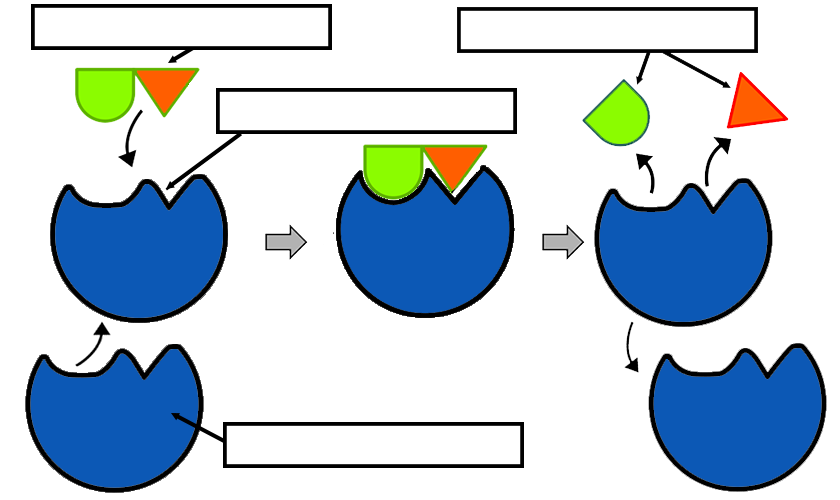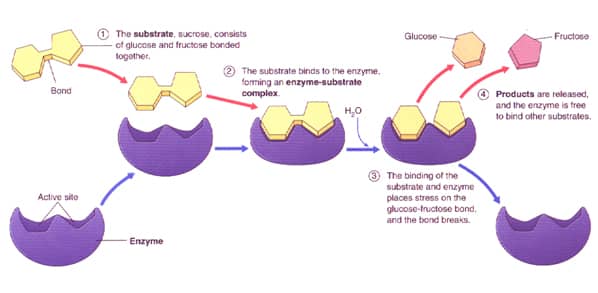

Digestive enzymesĭigestive enzymes all belong to the hydrolase class, and their action is one of splitting up large food molecules into their ‘building block’ components. Depending on the dose, the end result could be death. For example, water-soluble compounds of arsenic and mercury are extremely poisonous because they can permanently bind to some enzyme systems, markedly reducing their efficiency. Sometimes, chemical substances other than substrates can bind with the active sites of enzymes, blocking their normal function. In the presence of a small amount of the enzyme sucrase, the rate of breakdown is millions of times faster. If a solution of sugar is left in a sealed container, it breaks down into glucose and fructose extremely slowly. The rate of reaction for such a process is thousands of substrate molecules per minute. Once the chemical reaction within this lock and key arrangement has been completed, the products are released and the enzyme is free to attract another substrate molecule. The enzyme serves as the lock and the attracted molecule (called the substrate) is the key.

The analogy that is often used to describe this mechanism is that of a key fitting into a lock. Embedded within the shape is a region known as the ‘active site’, which can attract other suitably shaped molecules to bind to the site. Chemical structure of enzymesĮnzymes are large protein molecules, all of which have their own specific 3D shape.

All digestive enzymes are hydrolases, whereas most of the enzymes involved in energy release for muscular contraction are oxidation-reduction enzymes such as oxidases, hydrogenases and dehydrogenases. All digestive enzymes belong to this hydrolase class.Įnzymes are classified according to the type of chemical reaction catalysed. This reaction involves adding a water molecule to break a chemical bond and so the enzyme is a hydrolase.


 0 kommentar(er)
0 kommentar(er)
